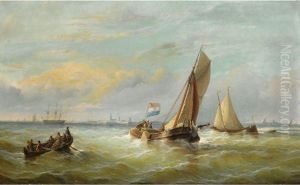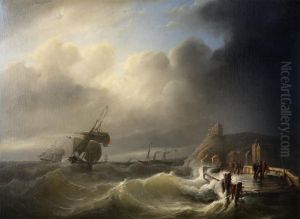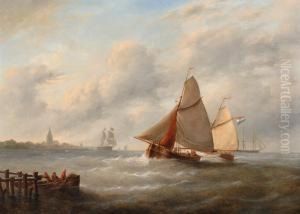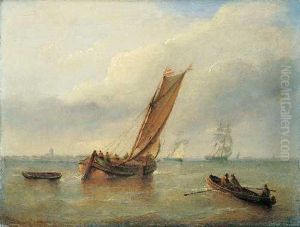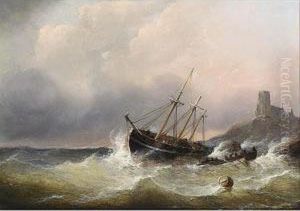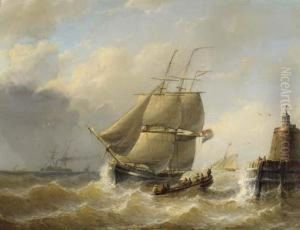Christiaan Cornelis Kannemans Paintings
Christiaan Cornelis Kannemans was a 19th-century painter from the Northern Netherlands, born on January 20, 1812, in Breda. He is known for his work in various genres of painting, including landscapes, genre scenes, and historical subjects. Kannemans initially trained under his father, Johannes Kannemans, who was a decorator and painter himself. This early education provided him with a foundation in the arts, which he continued to build upon throughout his life.
Kannemans further developed his skills by studying at the Royal Academy of Fine Arts in Antwerp, where he was influenced by the Flemish painting tradition. His style was characterized by a careful attention to detail and a penchant for capturing the atmospheric qualities of light and color, features that were highly regarded in the Romantic movement of the time.
Throughout his career, Kannemans exhibited his work at various art shows and gained recognition for his artistic abilities. He became a member of the Royal Academy of Fine Arts of Amsterdam and was active in the art community, contributing to the development of Dutch Romantic painting. Kannemans's landscapes often depicted the Dutch countryside, imbued with a sense of nostalgia and a romanticized view of nature. His genre scenes, on the other hand, illustrated everyday life with a focus on the customs and costumes of the people.
Despite his success, Kannemans's life was not without hardship. His later years were marked by financial struggles, which took a toll on his ability to produce work and maintain his presence in the art world. Christiaan Cornelis Kannemans passed away on December 7, 1884, in Etten-Leur. Although not as widely known as some of his contemporaries, Kannemans's contributions to Dutch painting remain appreciated by art historians and collectors, and his works can be found in various museums and private collections.




